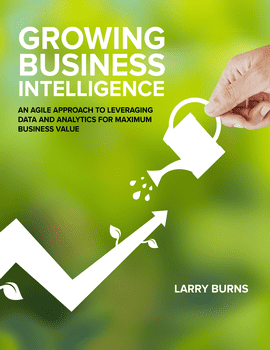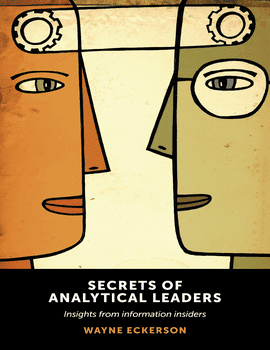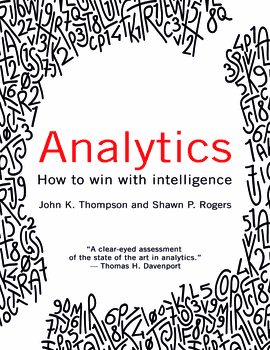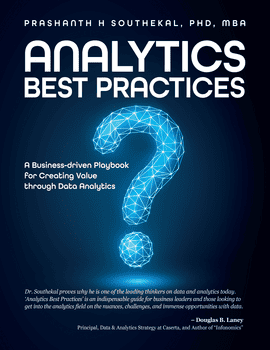Growing Business Intelligence
Growing Business Intelligence: An Agile Approach to Leveraging Data and Analytics for Maximum Business Value, by Larry Burns
Learn how to make business intelligence (BI) successful in your organization.
Topics
CHAPTER 1 A modern trinity
Why now? Why Business unIntelligence?
What’s it all about, trinity?
Pandora’s Box of information
Process, process every where
There’s nowt so queer as folk
Architecting the biz-tech ecosystem
Conclusions
CHAPTER 2 The biz-tech ecosystem
The birth of the Beast
Beauty and the Beast—the biz-tech ecosystem
Key features of the biz-tech ecosystem
Tyranny of the Beast
In practice—all change in the organization
Conclusions
CHAPTER 3 Data, information and the hegemony of IT
The knowledge pyramid and the ancient serpent of wisdom
What is this thing called data?
From information to data
The modern meaning model—m3
Database daemons and delicate data models
The importance of being information
IDEAL architecture (1): Information,
Structure/Context dimension
Metadata is two four-letter words
In practice—focusing IT on information
Conclusions
CHAPTER 4 Fact, fiction or fabrication
Questions and answers
Where do you come from (my lovely)?
It’s my data, and I’ll play if I want to
I’m going home…and I’m taking my data with me
Information from beyond the Pale
Tales of sails and sales
A new model for information trust
IDEAL architecture (2): Information,
Reliance/Usage dimension
In practice—(re)building trust in data
Conclusions
CHAPTER 5 Data-based decision making
Turning the tables on business
The data warehouse at the end of the universe
Business intelligence—really?
Today’s conundrum—consistency or timeliness
Most of our assumptions have outlived their uselessness
IDEAL architecture (3): Information,
Timeliness/Consistency dimension
Beyond the data warehouse
REAL architecture (1): Core business information
In practice—upgrading your data warehouse
Conclusions
CHAPTER 6 Death and rebirth in the information explosion
Data deluge, information tsunami
What is big data and why bother?
Internal reality mirrors the external
A primer on big data technology
Information—the tri-domain logical model
REAL architecture (2): Pillars replace layers
In practice—bringing big data on board
Conclusions
CHAPTER 7 How applications became apps and other process peculiarities
Hunter-gatherers, farmers and industrialists
From make and sell to sense and respond
Process is at the heart of decision making
Stability or agility (also known as SOA)
Keeping up with the fashionistas
IDEAL architecture (4), Process
REAL architecture (3), The six process-ations
In practice—implementing process flexibility
Conclusions
CHAPTER 8 Insightful decision making
BI (the first time)
Information—some recent history
Copyright or copywrong
I spy with my little eye something beginning…
The care and grooming of content
A marriage of convenience
Knowledge management is the answer; now, what was the question?
Models, ontologies and the Semantic Web
In practice—finally moving beyond data
Conclusions
CHAPTER 9 Innovation in the human and social realm
Meaning—and the stories we tell ourselves
Rational decision making, allegedly
Insight—engaging the evolved mind
Working 9 to 5…at the MIS mill
Enter prize two dot zero
People who need people…
IDEAL architecture (5): People
In practice—introducing collaborative decision making
Conclusions
CHAPTER 10 Business unIntelligence—whither now?
IDEAL architecture (6): Summary
REAL architecture (4): Implementation
Past tense, future perfect
How do we enable our organizations to enjoy the often significant benefits of BI and analytics, while at the same time minimizing the cost and risk of failure? In this book, I am not going to try to be prescriptive; I won’t tell you exactly how to build your BI environment. Instead, I am going to focus on a few core principles that will enable you to navigate the rocky shoals of BI architecture and arrive at a destination best suited for your particular organization. Some of these core principles include:
- Have an overarching strategy, plan, and roadmap
- Recognize and leverage your existing technology investments
- Support both data discovery and data reuse
- Keep data in motion, not at rest
- Separate information delivery from data storage
- Emphasize data transparency over data quality
- Take an agile approach to BI development.
This book will show you how to successfully navigate both the jungle of BI technology and the minefield of human nature. It will show you how to create a BI architecture and strategy that addresses the needs of all organizational stakeholders. It will show you how to maximize the value of your BI investments. It will show you how to manage the risk of disruptive technology. And it will show you how to use agile methodologies to deliver on the promise of BI and analytics quickly, succinctly, and iteratively.
This book is about many things. But principally, it’s about success. The goal of any enterprise initiative is to succeed and to derive benefit—benefit that all stakeholders can share in. I want you to be successful. I want your organization to be successful.
This book will show you how.
This book is for anyone who is currently or will someday be working on a BI, analytics, or Big Data project, and for organizations that want to get the maximum amount of value from both their data and their BI technology investment. This includes all stakeholders in the BI effort—not just the data people or the IT people, but also the business stakeholders who have the responsibility for the definition and use of data. There are six sections to this book:
- In Section I, What Kind of Garden Do You Want?, we will examine the benefits and risks of Business Intelligence, making the central point that BI is a business (not IT) process designed to manage data assets in pursuit of enterprise goals. We will show how data, when properly managed and used, can be a key enabler of several types of core business processes. The purpose of this section is to help you define the particular benefit(s) you want from BI.
- In Section II, Building the Bones, we will talk about how to design and build out the “hardscape” (infrastructure) of your BI environment. This stage of the process involves leveraging existing technology investments and iteratively moving toward your desired target state BI architecture.
- In Section III, From the Ground Up, we explore the more detailed aspects of implementing your BI operational environment.
- In Section IV, Weeds, Pests and Critters, we talk about the myriad of things that can go wrong on a BI project, and discuss ways of mitigating these risks.
- In Section V, The Sustainable Garden, we talk about how to create a BI infrastructure that is easy and inexpensive to maintain.
- Finally, Section VI presents a case study illustrating the principles of this book, as applied to a fictional manufacturing company (the Blue Moon Guitar Company).
About Larry
Larry Burns has worked in IT for more than 30 years as a database developer, DBA, data modeler, application developer, consultant, and teacher. He holds a B.S. in Mathematics from the University of Washington, and a Master’s degree in Software Engineering from Seattle University. He currently works for a global Fortune 500 company as a Data and BI Architect and Data Engineer (i.e., data modeler). He has written numerous articles for TDAN.com and DMReview.com, and is the author of Building the Agile Database (Technics Publications LLC, 2011). His interests include music, gardening, and landscaping. He is also an active member of Toastmasters, the international public speaking organization. He lives in Kent, Washington with his wife Becky.
Faculty may request complimentary digital desk copies
Please complete all fields.




